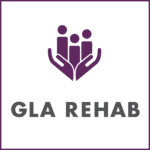In June 2016, the SABS will be introducing the 6th edition of the AMA Guides in order to combine the physical with mental/behavioural for CAT determination.
On the OCF 19, the mental and behaviour criterion states:
“A mental or behavioural impairment, excluding traumatic brain injury, determined in accordance with the rating methodology in Chapter 14, Section 14.6 of the American Medical Association’s Guides to the Evaluation of Permanent Impairment, 6th edition, 2008, that, when the impairment score is combined with a physical impairment described in paragraph 6 in accordance with the combining requirements set out in the Combined Values Table of the American Medical Association’s Guides to the Evaluation of Permanent Impairment, 4th edition, 1993, results in 55 percent or more impairment of the whole person”.
In the 6th edition method, the rater derives three scores by evaluating the client using 3 different scales:
- Brief Psychiatric Rating Scale (BPRS)
- The Global Assessment of Functioning Scale (GAF)
- The Psychiatric Impairment Rating Scale (PIRS)
In this blog post, we are going to explore the PIRS a bit further.
The PIRS is a rating scale from 0-5 used to measure functional impairment including:
- Activities of daily living
- Self-care and personal hygiene
- Social and recreational activities
- Travel
- Social functioning
- Concentration, persistence and pace
- Employability and resilience
Each functional impairment receives a rating from 0-5. For example, the Self-Care and Personal Hygiene category looks like the following:
SELF CARE AND PERSONAL HYGIENE
Class 1: No deficit, or minor deficit attributable to the normal variation in the general population
Class 2: Mild impairment: Able to live independently, looks after self adequately, although may look unkempt occasionally, sometimes misses a meal or relies on take-away food.
Class 3: Moderate impairment: Can’t live independently without regular support. Needs prompting to shower daily and wear clean clothes. Does not prepare own meals, frequently misses meals. Family member or community nurse visits (or should visit) X 2-3 per week to ensure minimum level of hygiene and nutrition.
Class 4 Severe impairment: Needs supervised residential care. If unsupervised, may accidentally or purposefully hurt self.
Class 5 Totally impaired: Needs assistance with basic functions, such as feeding and toileting.
Once a class score has been arranged for all 6 areas of functioning, the six scores are arranged from lowest to highest.
For example, 2, 2, 3, 3, 4, 5.
The median is then calculated by averaging the 2 middle scores. In this example, the median class = 3. If a score falls between 2 class, for example, 3, 4, then it is rounded up to the next class.
Each median class score represent a range of impairment:
Class 1 = 0 -3%
Class 2 = 4 -10%
Class 3 = 11-30%
Class 4 = 31-60%
Class 5 = 61-100%
In order to determine an exact percentage of impairment, an aggregate score needs to be calculated.
For example, using the numbers of 2, 2, 3, 3, 4, 5, that we used above, the aggregate score would be,
2 + 2 + 3 + 3 + 4 + 5 = 19
Using the Conversion Table provided in the assessment, it is then converted to a percentage score. In this example, it would convert to 24% (considering a Median Class of 3). The 24% was found by following the Class 3 level with the 19 aggregate score to the number of 24. If it was a Class 2 level with the same aggregate score of 19, the percentage of impairment would be different. The Conversion Table shows that the same aggregate score can lead to different percentages of impairment in different Median Classes.
This rating scale can only be completed by a Psychiatrist. However, as described above, the scale relates mainly to the function of the individual. This level of functioning can be very difficult to obtain from 1 or 2 sessions of subjective information provided by the client.
The Occupational Therapist will play a large role in obtaining the information used to decide on scores in the scale. An OT’s job revolves around “function” and activities of daily living, including but not limited to personal care, work, play, leisure, social participating and IADLS.
Through sessions in the client’s own home and community environment using objective information, the OT will be able to report and comment on all areas of functioning considered in the PIRS. This information from the OT can then be passed on to the Psychiatrist on the file to assist with determining a rating score.
The OT can play a vital part with this new scale in assisting with determining if a client is catastrophic or not.
Please look out for our blogs next month on the 2 additional scales, the Brief Psychiatric Rating Scale (BPRS) and The Global Assessment of Functioning Scale (GAF).
If you have any more questions about these scales or would like GLA to host a Lunch & Learn to educate you about the new upcoming changes to the SABS, please contact us. We would be happy to provide you with more information.


